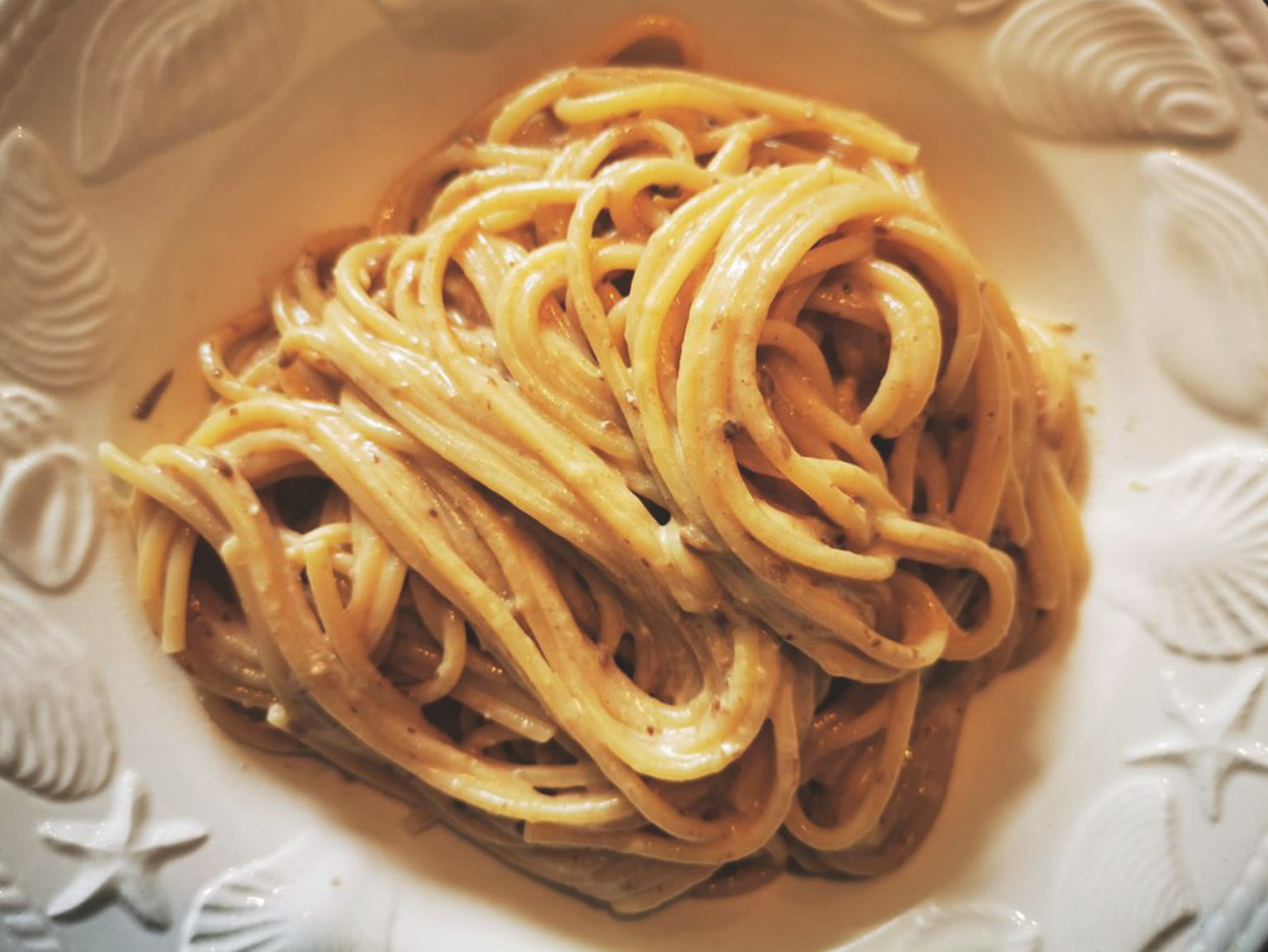Hard cheese, crumbly, chulky, produced starting from “rested milk”. From Piedmont cheesemaking school, here it is on stage the Castelrosso, known also as Toma Brusca
⏱ 4 MINUTES READING
IN THE PLATE
Talking about Castelrosso can lead us to different cheesemaking and cooking traditions and to many interpretations.
To me, two simple words can identify it: rested and versatile. Rested because it is produced using a technique that requires a milk acidification for a few hours, so that the taste can become more intense and increase the good bacteria load.
Moreover, the Castelrosso is versatile: thinking about the possible pairings and uses, I’ve found myself in front of a great number of choices, all valid, and I understood that its quality lies also in the capacity of making basically whatever you want out of it.
Here I propose you here something seasonal and also something for the autumn.
PEAR
In Italy we say “al contadin non far sapere quanto è bono il cacio con le pere” which literally means “do not tell the peasant how good is cheese with pear”.
But let’s make this saying a bit more intriguing: place a few regular slices of pear on a baking sheet and lay on top a few Castelrosso flakes. Then freshly grounded black pepper, a touch of honey and straight in the oven.
The herbaceous and yogurt note of Castelrosso goes beautifully with the warmth of the pear and finally the pepper gives the aromatic part. If you would like to linger even with a slice of bacon or lard, I would come to have an aperitif with you!
STILL A LITTLE OF SUMMER
As long as the summer continues, let’s take advantage of it. Hot days that push us towards the coast or in the mountains to cool off create the need for summer recipes.
Then also the opportunity to suggest the addition of flakes of Castelrosso in your salads or cold preparations. Its crumbly consistency is very interesting for this type of recipes, both for the notes of dried fruit and for its contribution of taste which remains less savoury and less moist than a classic feta.
AAAH, THE PASTA
Those who reject pasta have something to hide. They said it about those who only drink water, but for me it also applies to pasta.
Since Castelrosso is a cheese that is somewhat reminiscent of Castelmagno, it could be easy to think of it in a risotto version, but this time I had some Del Santo porcini mushrooms cream available so I created a sauce, only porcini and Castelrosso, no salt.
The aromas of the woods go hand in hand with the fresh lactic taste of Castelrosso, and although you think that the herbaceous charge is already satisfied with the cheese, my final touch was lime zest. Seeing is believing.
BRUSCA FONDUE
Staying on more autumnal tones, I suggest you to try the Castelrosso in the fondue version. By cooking it in bain-marie and simply helping yourself with milk, in about the same quantity as the cheese, you will get a nice cream that will lend itself to any crouton you want, even with fried polenta for example.
It adapts very well to different types of vegetables, so use only a very little salt in your preparation and top them with this cream.
Matteo De Santi
Export Manager
IN THE GLASS
Artistic suggestion: Mural - Jackson Pollock, 1943
Let’s go on a journey of acidity, aromatic complexity and layering of textures, ladies and gentlemen: Castelrosso and alcoholic beverages!
LANGHE NEBBIOLO DOC
Piedmont
The Castelrosso selected by Valsana has a minimum maturation of 60 days, based on acidity, on a chalky texture and on an aromaticity that is not yet too strong. First of all, I would look for pairing with a Langhe Nebbiolo, without overwhelming the cheese with important structures.
It is not difficult to find versions that age only in steel and with a low alcohol content, fantastic!
ROMAGNA SANGIOVESE DOC
Emilia Romagna
Don’t tell me you don’t know Sangiovese di Romagna! It suffers a little from the name of its Tuscany neighbours, but it is a wine that gives a lot of satisfaction.
Combine it with Castelrosso, here too you will find notes of fruit, spices, tobacco, all accompanied by a mouth with a smooth tannin and a present acidity. Cheese needs to be accompanied, not overwhelmed, I believe this wine fully respects it.
BEAUJOLAIS VILLAGE
France
Let’s stay on the funny wines and go to France, in an area where, according to some, Gamay-based wines are made to make people crazy. “Gourmand” would say French people, a wine played on acidity and the richness of aromas, it intrigues me to think about the combination with the mushroom notes that often characterize Castelrosso.
Never underestimate this grape variety, during blind tasting sessions I have often heard: “Pinot Noir, Burgundy?” (Myself included)
BELGIAN STRONG ALE
Belgian Style
Summer is going away, but we resist, and we want to continue making aperitifs outdoors. I thought of the combination with Belgian Strong Ale because, despite the alcohol content is not low, it is well masked by the hints of white flowers and yellow pulp fruit. The chalkyness of the cheese paste will be well balanced by the perceptible softness of the beer.
MORE IN THE CELLER?
You can also try the combination with a white from southern Italy, perhaps a Sicilian Grillo, soft and with a not excessive alcohol content. In general, however, I would look for a wine with good softness, non-aggressive tannins and good aromatic complexity.
Enrico De Conto
Purchase Manager




